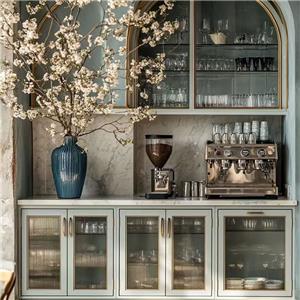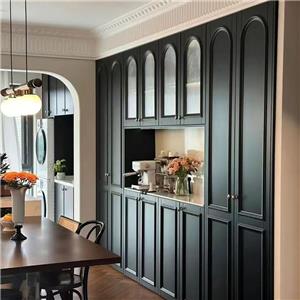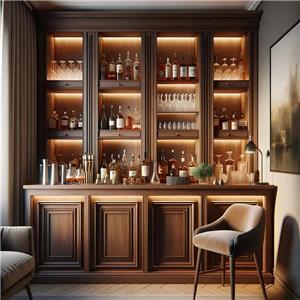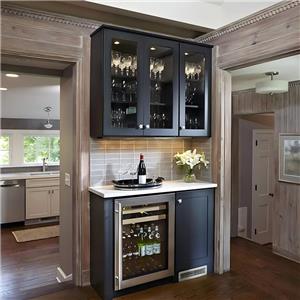How to ventilate a built-in wardrobe closet?
In modern homes, built-in wardrobe closets have become an integral part of many families. They not only maximize the use of bedroom space, but also integrate into various decoration styles with a neat and simple appearance. However, although built-in wardrobe closets are beautiful and practical in appearance, they are prone to poor ventilation due to their closed structure and confined space. If the ventilation design of the wardrobe is not appropriate, problems such as moisture, mold, and odor will quietly appear, affecting the preservation of clothes and may even endanger the structure of the wardrobe itself.
How to effectively design a ventilation system for a built-in wardrobe closet to ensure that clothes are dry and the air is fresh is a problem faced by many families. This article will explore in depth how to ventilate a built-in wardrobe closet, share practical ventilation methods and techniques, and help you avoid various problems caused by lack of ventilation while ensuring the beauty of the space.
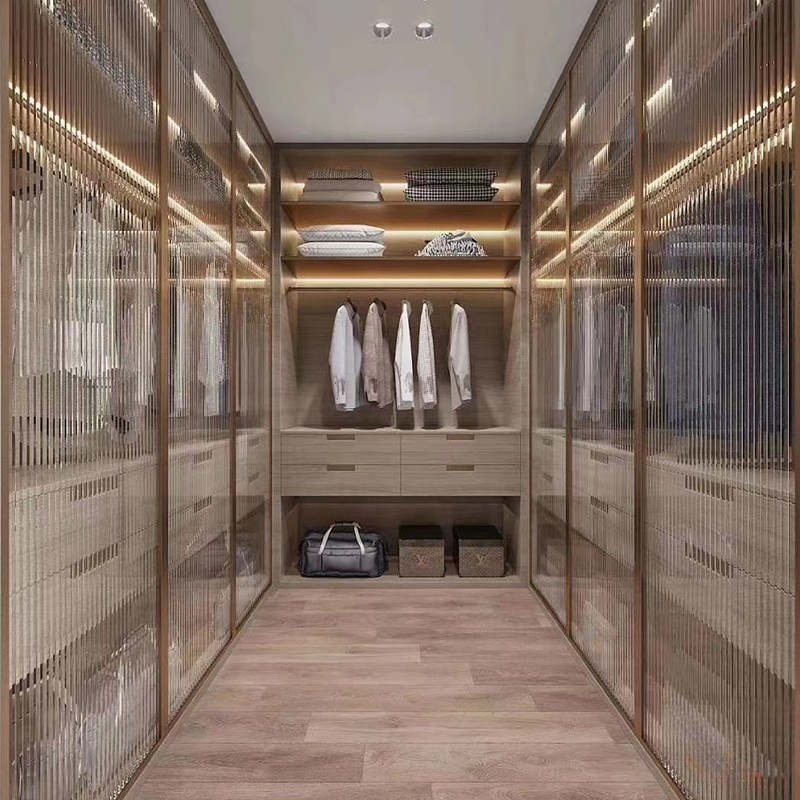
Why does a built-in wardrobe closet need ventilation?
Reasons why built-in wardrobe closets need ventilation:
1. Moisture-proof and mildew-proof
2. Remove odors
3. Keep clothes dry
4. Prevent bacteria and pests
1. Moisture-proof and mildew-proof
Built-in wardrobe closets are usually designed to be closed. The air circulation is poor after the door is closed, especially if the wardrobe is stored with hygroscopic materials (such as cotton, wool, etc.), which are prone to accumulate humid air. Moisture accumulation inside the wardrobe can cause clothes to mold and even affect the structure of the wardrobe. In the long run, it may corrode wood and damage clothes. This is why wardrobes must have good ventilation functions.
2. Remove odors
Built-in wardrobe closets are closed for a long time, and the lack of air circulation can easily lead to odor accumulation. These odors are usually caused by sweat, washing residues of clothes, air humidity, etc. If they are not cleaned or ventilated in time, these odors will bother the residents for a long time. Effective ventilation can help keep the interior of the wardrobe fresh and avoid odor deposition.
3. Keep clothes dry
If there is not enough ventilation in the built-in wardrobe closet, it is easy for clothes to stay in a humid environment for a long time, especially in seasons with high humidity. The moisture in the clothes is not easy to evaporate, and it is easy to produce mold spots or odors when stored for a long time. Proper ventilation can keep clothes dry and effectively extend the service life of clothes.
4. Prevent bacteria and pests
Unventilated wardrobes are prone to breed bacteria, mites and other microorganisms. Ventilation is particularly important, especially for families with high hygiene requirements for storing clothes. Keeping air flowing helps reduce bacterial growth and ensure the hygiene of clothes and wardrobes.
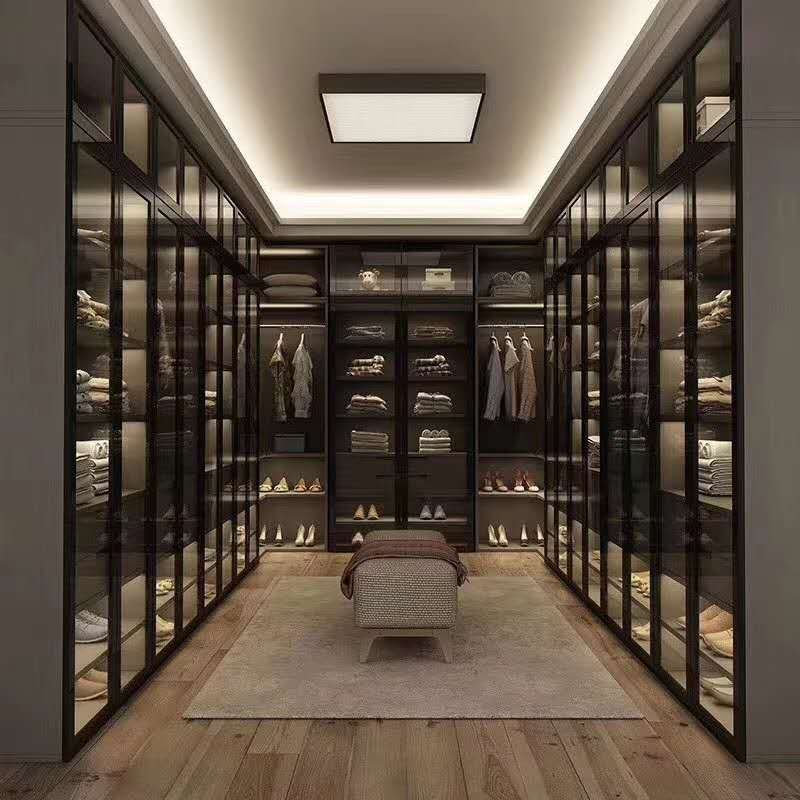
How to design a ventilation system for a built-in wardrobe closet?
Since ventilation is crucial to a built-in wardrobe closet, how should we design a ventilation system for the wardrobe? Here are some common and practical ventilation design methods.
1. Use door gaps and vents
Most built-in wardrobe closets have tightly designed door panels to ensure that the items inside the wardrobe are not disturbed by dust. However, an overly tight door panel design may prevent air from circulating. Therefore, many built-in wardrobe closets will reserve a certain amount of ventilation space at the door gap. You can choose to add some special ventilation gaps or mesh designs on the edge of the door to ensure that air can circulate naturally.
In addition, it is also a common practice to add vents to the side walls or bottom of the built-in wardrobe closet. The design of these vents can not only ensure air circulation and avoid moisture accumulation, but also increase the overall aesthetics.
2. Install a built-in fan
For families with higher requirements, especially those living in areas with heavy humidity, you can consider installing a fan inside the built-in wardrobe closet. The fan can increase the air flow inside the cabinet without opening the door, especially in the humid weather in summer, the fan can effectively prevent the humid air from being trapped, thereby keeping the wardrobe dry. For some wardrobes with deeper or longer spaces, it is particularly necessary to install a small built-in fan, which can achieve more uniform air circulation.
There are also special fans designed for wardrobes on the market. These fans are small in size and low in noise, which are very suitable for installation inside the wardrobe. They will not take up too much space and will not affect the beauty of the wardrobe.
3. Set up ventilation grilles
If your built in wardrobe closet is custom-made, you can consider adding ventilation grilles during the design stage of the wardrobe. Ventilation grilles are usually installed on the back panel or door of the wardrobe to promote air flow. The design of the ventilation grille can match the overall style of the wardrobe to achieve the unity of beauty and practicality.
Usually, the size of the ventilation grille is determined according to the size, space and ventilation needs of the wardrobe. Grilles that are too large or too small may not achieve the ideal ventilation effect. Therefore, ventilation efficiency and aesthetics need to be considered comprehensively during design.
4. Reasonable use of the space inside the wardrobe
In addition to the external ventilation system, the layout design inside the built in wardrobe closet is also crucial. Reasonable space planning can maximize the ventilation effect. For example, leave a certain amount of space above or below the wardrobe so that air can flow freely in the cabinet; or design the hanging rod inside the wardrobe to be adjustable to better utilize the space and maintain air circulation.
If the wardrobe is deep, you can consider partitioning design, adding middle partitions or ventilation slots to allow air to circulate in every part of the wardrobe. Reasonable layout not only helps ventilation, but also makes it easier to store and access clothes.
5. Use natural ventilation materials
Using some natural ventilation materials inside the built in wardrobe closet is also a way to improve the ventilation effect of the wardrobe. For example, you can consider using natural materials such as wood and bamboo, which have good air permeability and can effectively improve the ventilation of the wardrobe. At the same time, these materials also have natural moisture-proof and mildew-proof effects, which help keep clothes dry.
If you choose to customize the built in wardrobe closet, you can also choose materials with strong air permeability, such as solid wood or cork boards, to increase the ventilation effect of the wardrobe. Some furniture dealers also provide special breathable boards or moisture-proof boards, and you can choose the right materials according to your needs.
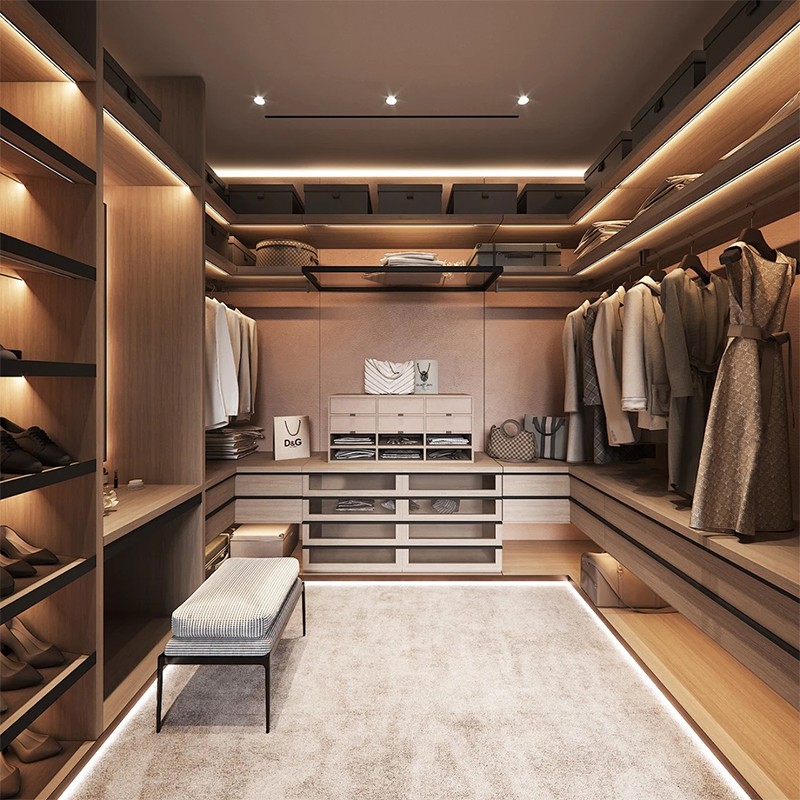
Daily maintenance: The key to keeping the wardrobe ventilated
In addition to making arrangements for the ventilation system during the design stage, daily maintenance is also crucial. Here are some tips for daily maintenance to help you maintain the ventilation effect of the wardrobe:
1. Clean the wardrobe regularly
Keep the interior of the built in wardrobe closet clean, and regularly clean the corners and inner walls of the wardrobe to prevent dust and moisture accumulation. Especially for clothes that have not been worn for a long time, regularly taking them out to dry can effectively reduce moisture and odor.
2. Use a dehumidifier
If the humidity in your area is high, you can use a dehumidifier in the built in wardrobe closet to help reduce moisture in the air. There are many types of dehumidifiers on the market, such as desiccants, charcoal bags, etc. These products can effectively absorb moisture and keep the wardrobe dry.
3. Avoid over-stacked clothing
Too many clothes in the closet will also affect the ventilation effect. Try to avoid filling the closet too full. Appropriate space not only helps to keep the air circulated, but also helps to keep the clothes clean and protected.
4. Use sunlight and natural air
If conditions permit, you can open the closet door regularly to allow natural air to circulate, especially on sunny days. Sunlight has a bactericidal and disinfecting effect, which helps to keep the wardrobe fresh.
Can I get a customized quote for wholesale cabinet orders from Gagaluna?
Absolutely. Gagaluna offers flexible pricing and quotes tailored to your specific needs. As a factory-direct supplier in China, we ensure competitive rates for wholesale buyers. Whether you're purchasing custom kitchen cabinets, walk-in wardrobes, or decorative wall panels, we provide detailed quotations based on materials, design, and quantity. Enjoy access to our discount promotions and low-cost manufacturing advantages.

